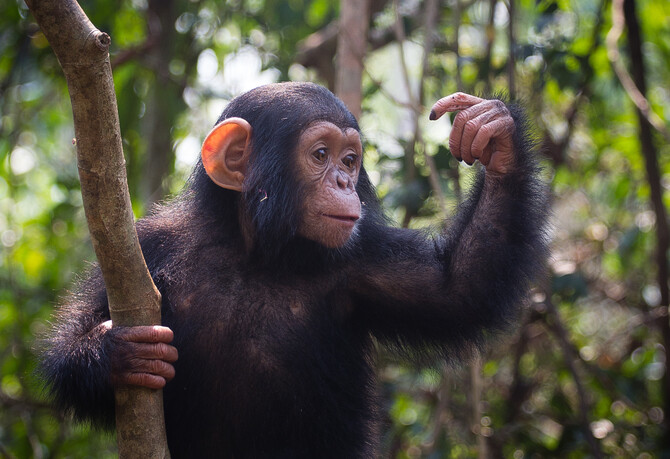Genomes of Chimpanzee Parasite Species Reveal Evolution of Human Malaria, According to Penn-led Study
Understanding the origins of emerging diseases – as well as more established disease agents -- is critical to gauge future human infection risks and find new treatment and prevention approaches. This holds true for malaria, which kills more than 500,000 people a year. Symptoms, including severe anemia, pregnancy-associated malaria, and cerebral malaria, have been linked to the parasite’s ability to cause infected red blood cells to bind to the inner lining of blood vessels.
An international team led by Beatrice Hahn, MD, a professor of Medicine and Microbiology from the Perelman School of Medicineat the University of Pennsylvania, and MD/PhD student SeshSundararaman, used a selective amplification technique to sequence the genomes of two divergent Plasmodium species, Plasmodium reichenowi and Plasmodium gaboni, from miniscule volumes of chimpanzee blood to find clues about the evolution and pathogenicity of Plasmodium falciparum, the deadliest malaria parasite that affects people. Their findings appear this week in Nature Communications.
African apes harbor at least six Plasmodium species that have been classified into a separate subgenus, called Laverania. Three of theseLaverania species, including Plasmodium reichenowi andPlasmodium gaboni, reside in chimps, while three others, includingPlasmodium praefalciparum that gave rise to Plasmodium falciparum, reside in gorillas. The gorilla origin of Plasmodium falciparum was discovered several years ago by this same international group of investigators.
“We want to know why Plasmodium falciparum is so deadly,” Hahn said. “The answer must lie in the blueprint -- the genome -- of its chimpanzee and gorilla cousins. We also want to know how and when the gorilla precursor of Plasmodium falciparum jumped into humans, and why this happened only once.”
Parasites infecting humans and great apes share genes that allow them to hide from the host’s immune system, adhere to tissues, and cause disease. Better understanding the evolution of human malaria virulence provides potential new targets for drugs and vaccines.
Coauthor Dustin Brisson, PhD, a professor of Biology at Penn, initially developed the selective amplification method to sequence bacterial genomes. Sundararaman calls applying this new approach to malaria research “one of the paper’s most important contributions.” Using this technique, the team was able to generate high quality Laverania genome sequences by using small amounts of unprocessed blood collected from chimpanzees living in sanctuaries during routine health screens.
The chimpanzee parasite genomes contain a goldmine of information about the evolutionary origins of the malaria parasites infecting humans. One of the first things to emerge from genome-wide analyses was that the parasites indeed represent distinct, non-interbreeding species.
Click here to view the full release.








